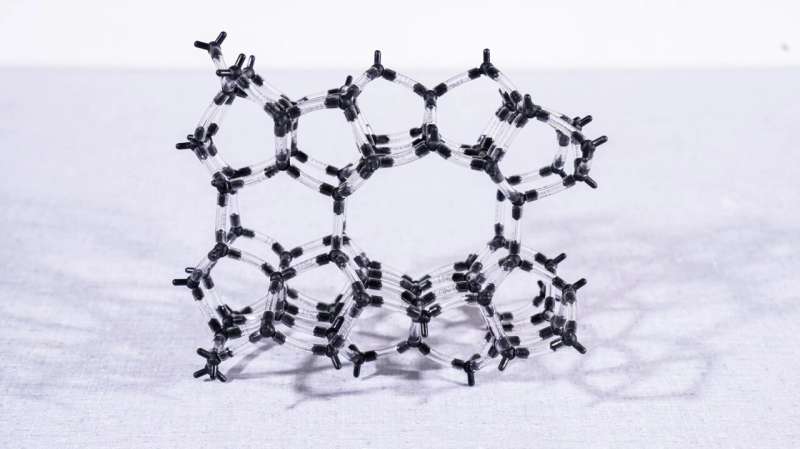Researchers at the Paul Scherrer Institute have uncovered the intricate workings of zeolite-based catalysts, which are crucial in removing toxic nitrogen oxides from industrial emissions. Discover how the precise arrangement of iron atoms within the zeolite framework enables the simultaneous conversion of nitric oxide and nitrous oxide into harmless molecules. This research provides insights that could lead to catalyst improvements for a cleaner future. Additionally, the environmental impact of these nitrogen oxides, such as their contribution to acid rain and the greenhouse effect, is explored.

Deciphering the Zeolite Catalyst Puzzle
Industrial processes often produce harmful gases, including nitric oxide and nitrous oxide, which must be addressed to protect both human health and the environment. Zeolite-based catalysts have emerged as a crucial solution to this problem, but their complex inner workings have long been a mystery.
Researchers at the Paul Scherrer Institute, in collaboration with the Swiss chemical company CASALE SA, have now uncovered the details of how these catalysts render the combination of these two nitrogen oxides harmless. By leveraging a range of spectroscopic techniques, they have identified the specific arrangement of iron atoms within the zeolite framework that is responsible for the catalytic conversion.
The Intricate Dance of Iron Atoms
Zeolites are a family of minerals composed of aluminum, oxygen, and silicon atoms that form a porous, lattice-like structure. When iron is introduced into this framework, it enables the conversion of nitric oxide and nitrous oxide into harmless molecules. However, the iron atoms can assume various forms within the zeolite, and the researchers set out to determine which specific arrangement is crucial for the catalytic process.
Using a combination of X-ray absorption spectroscopy, electron paramagnetic resonance spectroscopy, and infrared spectroscopy, the researchers were able to pinpoint the precise location and interaction of the iron atoms responsible for the catalysis. They discovered that two iron atoms, situated in neighboring sites within the zeolite lattice, work in concert to drive the desired reaction. One iron atom, surrounded by a square arrangement of oxygen atoms, is responsible for converting nitrous oxide, while the other, with a tetrahedral arrangement of oxygen atoms, is involved in the reaction of nitric oxide.
Implications for Catalyst Optimization and Environmental Impact
This detailed understanding of the catalytic mechanism paves the way for future improvements to zeolite-based catalysts. By knowing exactly where the critical chemical reactions take place, manufacturers can now focus on optimizing the production and arrangement of these specific iron species within the zeolite framework.
Beyond the immediate benefits of reducing industrial emissions, the researchers also highlight the broader environmental impact of these nitrogen oxides. Nitric oxide is a contributor to acid rain, while nitrous oxide has a powerful greenhouse effect, almost 300 times stronger than carbon dioxide. By effectively removing these harmful substances from industrial waste streams, the zeolite catalysts play a crucial role in mitigating the environmental damage caused by these pollutants.
